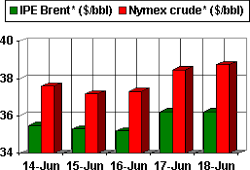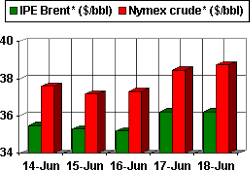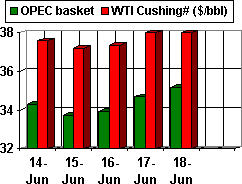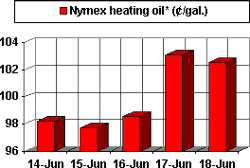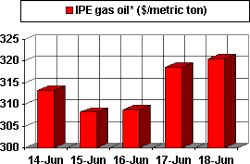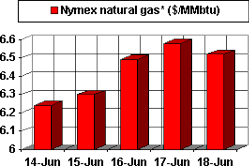The cooling season is upon us with a vengeance. A recent heat wave across the US, in tandem with outages at several nuclear power plants, has helped nudge natural gas spot and futures prices back up.
Is that a portent for tighter gas markets the rest of the year? Or does it mask an inherent bearishness in the market?
Well, yes, to both questions.
That's a flippant way of noting that the US gas market is likely to remain on a price teeter-totter for most of the summer. Transient demand or supply events are likely to spike gas prices up a bit from time to time, but otherwise the underlying market balance suggests downward pressure on gas prices persisting.
The good news: No one (no one vocal, anyway) expects a collapse in gas prices this year.
So it's pretty much back to what passes for normal in US gas markets in terms of price volatility. The difference now is that the price swings are happening above a floor roughly double what it was just a couple of years ago. And that situation isn't likely to change dramatically soon.
Upward swing
Gas consumption has taken an upward swing heading into summer.
Gas prices took an upward swing in mid-Juneup almost $1/MMbtu on the yearas temperatures were 21% higher than normal during the week ended June 12 and expected to remain at normal levels (meaning hot) or higher than normal through the rest of the month in most areas of the country.
For the cooling season to date, weather in the US overall has been 29% warmer than normal and 26% warmer than last year.
A high level of nuclear outages combined with an 8% jump in electric power demand in response to the hot weather helped trim the rate of storage injection the week ended June 12, pulling down the year-over-year storage surplus to a mere 21 bcf relative to the 5-year average. UBS Securities analyst Ron Barone projected a further decline in the year-over-year storage surplus in a June 17 research note.
At the same time, however, gas production is up.
The surge in US gas drilling suggests that "it is extremely unlikely that [gas] shortages will occur this year," said James Williams, head of Ohio-based WTRG Economics.
Noting that more than 50% of US gas consumed comes from wells drilled in the past 3 years, he said in a June 20 report, "Even with the 2002 dip in drilling, activity has been higher in each of the last 3 years than in any previous 12 month period."
So there is likely to be little problem in building storage, and gas prices are likely to weaken relative to crude oil in the coming months, Williams contends.
Countervailing trends
US gas consumption and supply both are up, agreed Ron Denhardt, vice-president, natural gas services, Strategic Energy & Economic Research Inc., Winchester, Mass.
He pointed out in an early June report that the weather-adjusted supply-demand balance should be much tighter than indicated by the rate of storage injections, given the increase in consumption thus year. The damper on the market is a surge in gas production that Denhardt contends might be getting overlooked in quarterly report data. Possible culprits in the oversight include mergers, asset divestitures, and sample bias (the latter focused on the Gulf Coast and Gulf of Mexico and thus overlooking privately held producers in the Rockies and Midcontinent).
Denhardt also cites as key market factors slippage in US imports of Canadian gas, a slight increase in LNG imports offset by higher exports to Mexico, gas prices running at a premium to distillate, and US gas production remaining flat (depending on hurricane activity). All in all, the supply-demand balance could loosen and may end the storage season at over 3.4 tcf, the most in over a decade. So unless something happens to tighten the balance by more than 2 bcfd, gas prices will come under severe pressure.
That something is what's already been happening: really hot weather, a situation that national forecasters predict will continue. But a drop in temperatures accompanied by a drop in oil prices would trigger a sharp fall in gas prices by late summer, Denhardt warns.
In short, "There are countervailing forces that will tend to loosen and tighten the supply-demand balance this summer relative to last year," he said.
Countervailing: like a teeter-totter.
Author's e-mail: [email protected])
OGJ HOTLINE MARKET PULSE
Latest Prices as of June 21, 2004
null
null
null
null
null
null
NOTE: Because of holidays, lack of data availability, or rescheduling of chart publication, prices shown may not always reflect the immediate preceding 5 days.
*Futures price, next month delivery. #Spot price.
